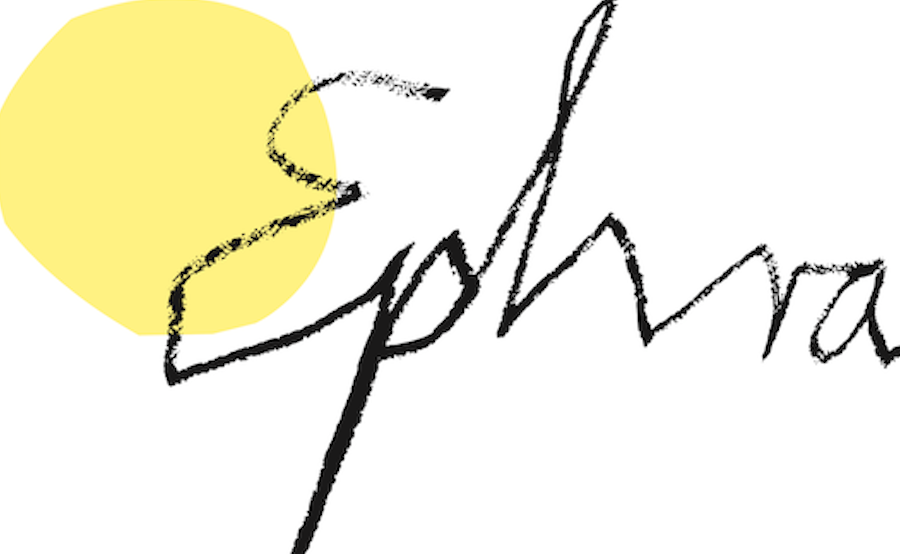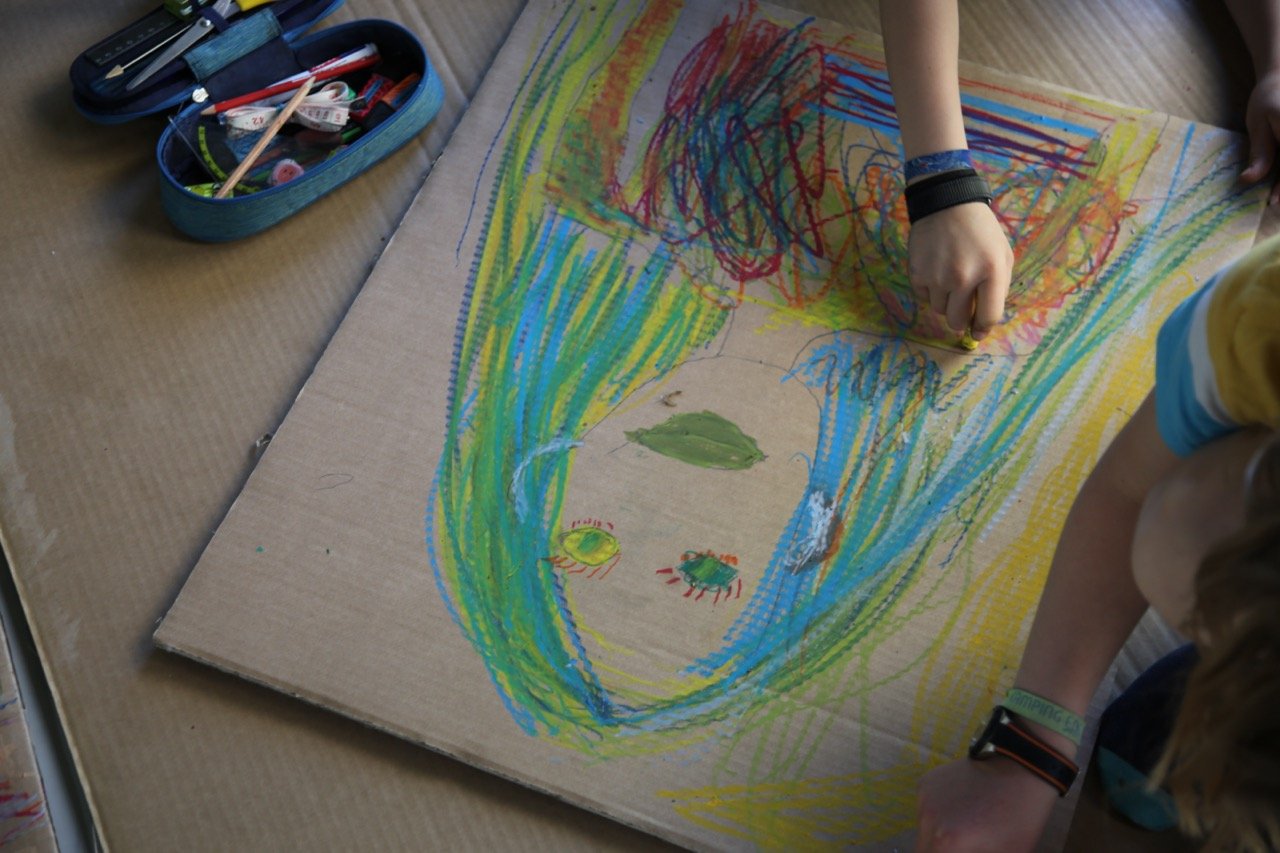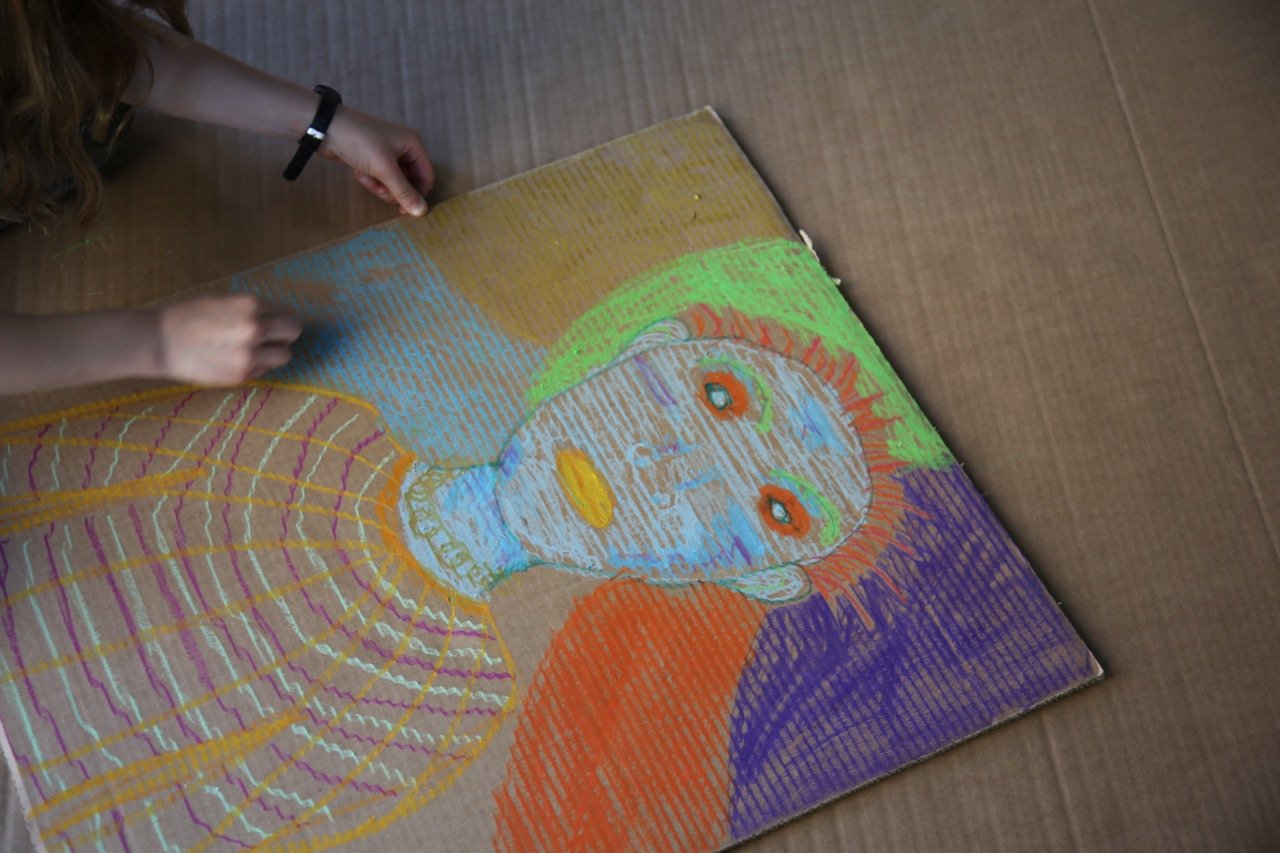In search of colour with Ikram Labouini
The artist Ikram Labouini is coming to our floor today. We're excited to meet her and discuss beforehand how we want to talk to Ikram because she comes from Italy and only speaks and understands a little German. We agree to speak mainly English with her. Luckily, many of us already know some English and otherwise Rebecca is by our side to help us with the translation.
After Ikram's arrival, we look at the pictures that she has brought to the floor and set up on the side of the large stage - almost like a small exhibition. We see large, colourful pictures of different people. Ikram explains that these are portraits and that she prefers to paint pictures of friends, acquaintances and herself. We ask Ikram why she likes to paint people so much and she tells us that people inspire her in particular. She finds it fascinating how we are perceived by others and how we always recognise ourselves in others. Ikram uses bright colours because she believes that this allows a new reality to be created in art. Art is not there to depict things exactly as they are, but to give them a new meaning, she believes. Ikram can also express the diversity and joy of life through all the colours. She says that for her, art is a way of understanding life. And she only really understood some things when she painted them on canvas.
We ask Ikram what she wanted to be when she was a child. "A history teacher", she answers. This answer surprises us a little, but Ikram explains that she thinks that history and looking at the past can also help us to understand life better. Her own life and family history is very important to Ikram and her art. Ikram's parents come from Morocco. However, she herself was born in Italy. Although she has lived there all her life, she only obtained her Italian citizenship when she was 21. Together, we consider what it actually means to have citizenship: belonging to a country, the right to vote, having a passport and a lot of paperwork. For Ikram, however, citizenship means much more. She explains to us that the question of where she comes from and where she belongs to has always had a lot to do with how she felt and what she identified with.
After a short break, we now want to try painting portraits ourselves. Some of us paint in groups of two, others prefer to paint alone. We spread out across the entire floor and use large pieces of cardboard to paint on with oil pastels. We create self-portraits, pictures of our parents, friends, Ikram and even one of our teacher. Like Ikram, we experiment freely with lines, shapes and colours and really let off steam. Ikram always encourages us to fully utilise our creativity and to express our feelings and ideas freely and without much thought on the cardboard. She tells us that she particularly likes it when children draw because children are not yet as stuck in reality as adults.
Finally, we set up our own small exhibition on the floor with our portraits. Just like in a real museum, we write signs for our pictures with our names, the titles of our artworks (such as "Vanja in search of colour" or "Crooked and bent"), the material and the sizes. We look at our pictures together and take a short tour through our exhibition. One of us says: "I chose the colours because they are as colourful as the person themselves". Now that we have got to know Ikram better, we realise that she is also a colourful person – but that you can already see in her art.








